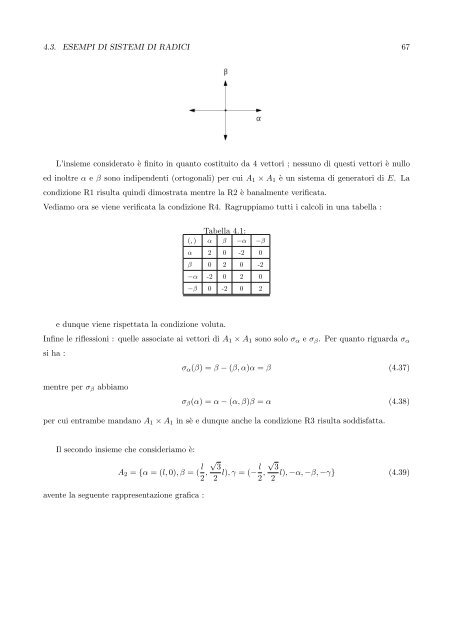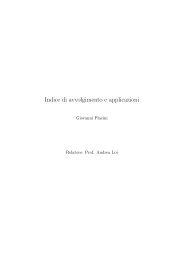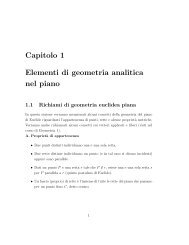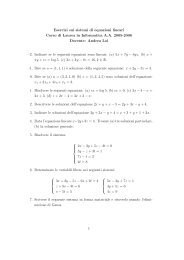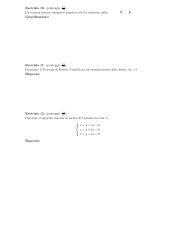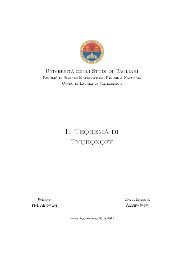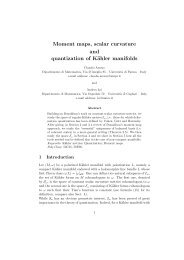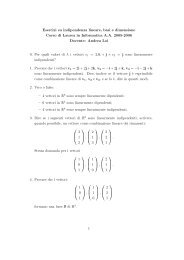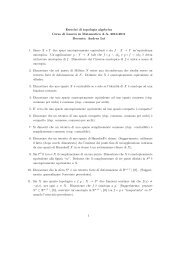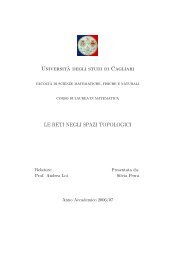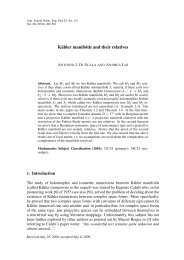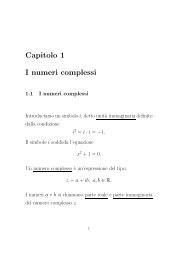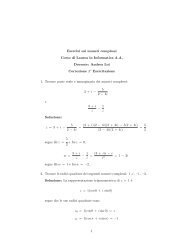Algebre di Lie semisemplici, sistemi di radici e loro classificazione
Algebre di Lie semisemplici, sistemi di radici e loro classificazione
Algebre di Lie semisemplici, sistemi di radici e loro classificazione
Create successful ePaper yourself
Turn your PDF publications into a flip-book with our unique Google optimized e-Paper software.
4.3. ESEMPI DI SISTEMI DI RADICI 67<br />
L’insieme considerato è finito in quanto costituito da 4 vettori ; nessuno <strong>di</strong> questi vettori è nullo<br />
ed inoltre α e β sono in<strong>di</strong>pendenti (ortogonali) per cui A1 × A1 è un sistema <strong>di</strong> generatori <strong>di</strong> E. La<br />
con<strong>di</strong>zione R1 risulta quin<strong>di</strong> <strong>di</strong>mostrata mentre la R2 è banalmente verificata.<br />
Ve<strong>di</strong>amo ora se viene verificata la con<strong>di</strong>zione R4. Ragruppiamo tutti i calcoli in una tabella :<br />
Tabella 4.1:<br />
(, ) α β −α −β<br />
α 2 0 -2 0<br />
β 0 2 0 -2<br />
−α -2 0 2 0<br />
−β 0 -2 0 2<br />
e dunque viene rispettata la con<strong>di</strong>zione voluta.<br />
Infine le riflessioni : quelle associate ai vettori <strong>di</strong> A1 × A1 sono solo σα e σβ. Per quanto riguarda σα<br />
si ha :<br />
mentre per σβ abbiamo<br />
σα(β) = β − (β, α)α = β (4.37)<br />
σβ(α) = α − (α, β)β = α (4.38)<br />
per cui entrambe mandano A1 × A1 in sè e dunque anche la con<strong>di</strong>zione R3 risulta sod<strong>di</strong>sfatta.<br />
Il secondo insieme che consideriamo è:<br />
A2 = {α = (l, 0), β = ( l<br />
2 ,<br />
avente la seguente rappresentazione grafica :<br />
√ 3<br />
2<br />
l<br />
l), γ = (−<br />
2 ,<br />
√<br />
3<br />
l), −α, −β, −γ} (4.39)<br />
2


